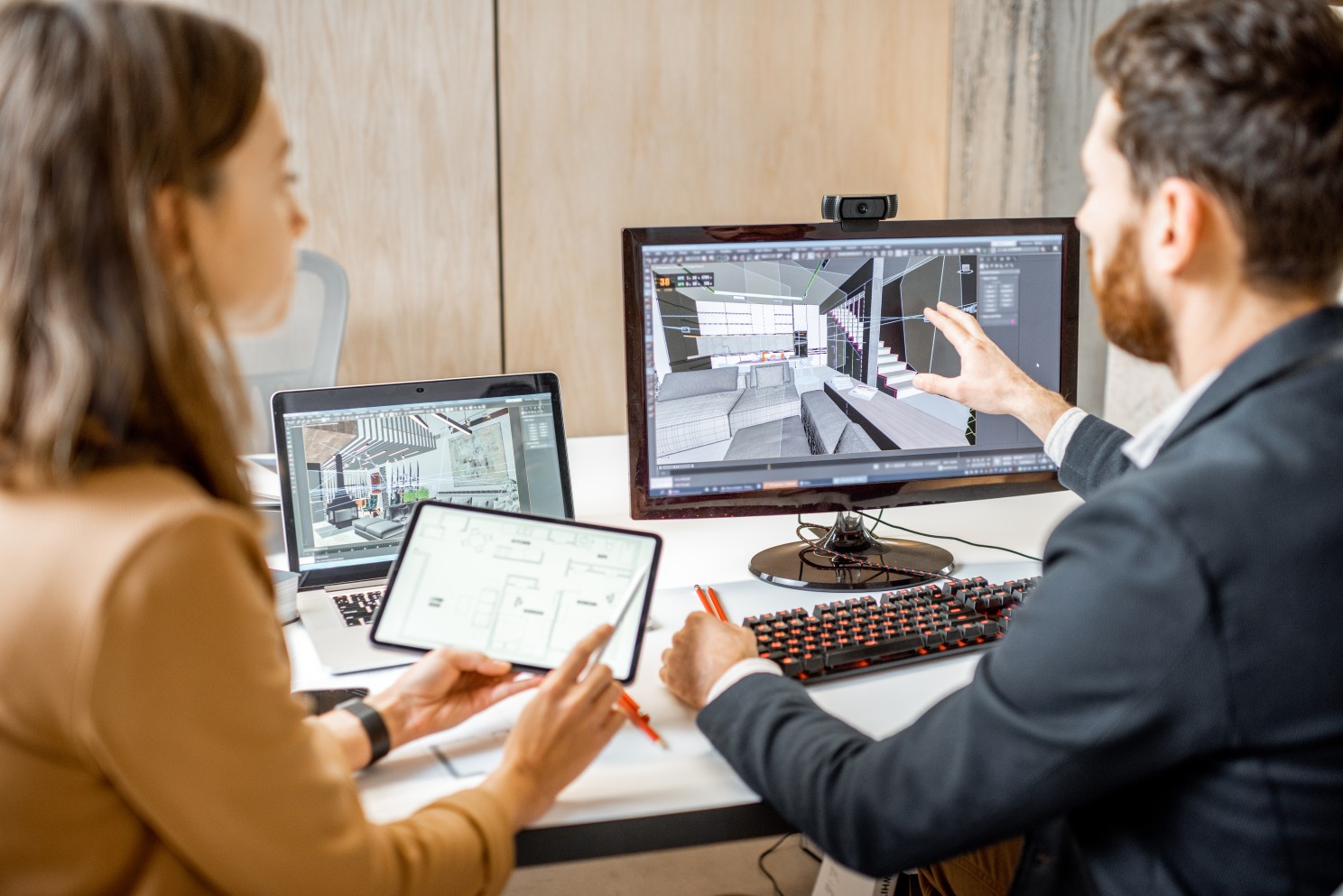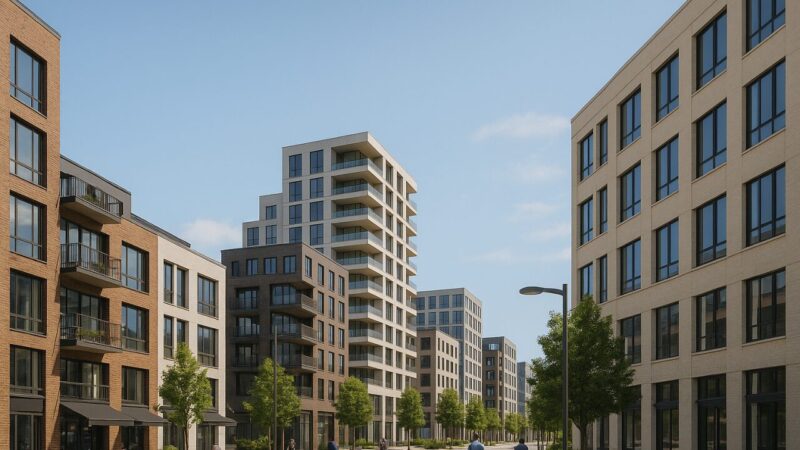We’re living through a fascinating shift in how cities are planned and built. The old model — zoning-driven, car-dependent, single-use districts — is giving way to something more human, more sustainable, and infinitely more intelligent.
When we discuss innovative master plans, we’re not just referring to fancy sensors or tech-branded districts. We’re talking about rethinking the very DNA of urban development — creating places where proximity, data, and design come together to build communities that actually work.
Let me unpack what that means, and how we can use artificial intelligence (AI) and advanced urban technologies to plan, build, and operate mixed-use districts that are profitable, sustainable, and deeply human.
1. The Vision: 15-Minute Living Meets Intelligent Urbanism
Every successful project starts with a clear vision. For me, that vision is inspired by the 15-minute city — an urban model that aims for everything you need to live, work, learn, and enjoy to be within a 15-minute walk or bike ride. It’s proximity at its best: local jobs, local services, and local experiences.
But beyond convenience, this model represents a paradigm shift in urban economics. When you reduce travel times, mix uses, and prioritize people over cars, you don’t just improve quality of life — you unlock new forms of value. Real estate appreciates, local economies thrive, and urban infrastructure becomes more efficient.
To get there, every master plan should stand on five pillars:
(1) Proximity and density: Create compact, walkable districts with intensity around transit.
(2) Mixed-use balance: Blend housing, offices, retail, culture, and green areas in one ecosystem.
(3) Sustainability: Integrate green infrastructure, renewable energy, and circular resource systems.
(4) Mobility shift: Prioritize active and shared transport — walking, cycling, public mobility.
(5) Inclusion: Ensure access to housing, services, and opportunities for all social segments.
When you align these principles with data and AI, you move from intuition to intelligence.
2. From Vision to Plan: The Integrated Design Process
Planning a mixed-use district is like conducting an orchestra. Every element — land use, transport, environment, digital infrastructure — must work in harmony.
The process typically occurs in five main stages:
1. Diagnosis (Data + Context)
Utilize Geographic Information Systems — GIS and spatial analytics to map current conditions, including land use, access to services, population density, environmental risks, and mobility flows. Overlaying these layers reveals where opportunities and gaps exist.
2. Program Definition
Translate insights into a clear program: housing mix, job density, amenities, open space ratios, transport nodes. Define measurable goals — like “100% of homes within 500 meters of a park” or “50% of daily trips by active mobility.”
3. Urban Design
Lay out the blocks, open spaces, and transport systems. Ensure active ground floors, shaded walkways, green corridors, and interconnected bike and pedestrian networks. Plan high-density nodes near public transport.
4. Regulatory + Environmental Strategy
Align with local planning codes and sustainability certifications (LEED-ND, WELL, EDGE). Integrate green infrastructure for stormwater, renewable energy, and passive cooling.
5. Digital Planning Tools
Leverage BIM (Building Information Modeling) and digital twins to simulate scenarios before breaking ground. These tools allow planners to visualize how sunlight, wind, traffic, or floods will behave in real time — and make adjustments early.
This is where the shift happens: design is no longer static. It’s dynamic, data-driven, and adaptive.
3. The Smart Tech Stack Behind a Future-Ready District
Building an intelligent district means orchestrating multiple technologies under a single urban “operating system.” Here’s the backbone:
- GIS: The spatial brain of the city. It integrates geodata (including land use, transportation, and environmental data) into a single map for analysis and informed decision-making.
- BIM (Building Information Modeling): The digital skeleton of every building and piece of infrastructure, connecting architecture, engineering, and construction in one live model.
- Digital Twins: Real-time virtual replicas of the district that combine GIS + BIM + IoT data. They enable you to simulate traffic, energy, climate, or even emergency responses before implementing physical changes.
- IoT (Internet of Things): The sensory layer — thousands of smart devices monitor everything from air quality and noise to lighting, parking, and energy consumption.
- Open Data Platforms: The city’s central nervous system, collecting, cleaning, and visualizing information across systems.
- Cybersecurity + Governance: Protecting data integrity and privacy while ensuring transparency and citizen trust.
Together, these technologies enable a district to “feel, think, and act” — sensing what happens, understanding why, and responding intelligently.

4. Where Artificial Intelligence Changes the Game
AI is the behind-the-scenes engine of the brilliant master plan. It provides predictive power, automation, and continuity. AI is the hidden engine of an intelligent master plan. It adds predictive power, automation, and continuous learning at every stage of the project.
Let’s break down how AI creates value step by step:
Stage 1: Diagnosis — Understanding the Territory
AI models analyze spatial, demographic, and mobility data to detect hidden patterns — areas underserved by schools or green spaces, or neighborhoods with high potential for densification.
Value: Cuts planning time by 60–70%, improves accuracy, and helps investors identify undervalued sites.
Stage 2: Design — From Manual Drafting to Generative Design
AI generative models simulate thousands of urban configurations in minutes. They optimize for daylight, comfort, wind, traffic, and even real estate ROI.
Value: Up to 30% better energy and environmental performance, faster design cycles, and data-backed decisions that enhance asset value.
Stage 3: Simulation — Forecasting Urban Behavior
Using digital twins, AI predicts how the city will behave under different scenarios — how a new street layout impacts traffic, how future energy demand evolves, or how rainfall will affect stormwater systems.
Value: Avoids over- or under-dimensioned infrastructure, saving 20–25% of CAPEX in utilities and mobility networks.
Stage 4: Construction — Smarter, Safer, Cheaper
AI combined with BIM and drones tracks construction progress, compares it against schedules, and detects safety risks. Predictive algorithms flag potential cost overruns before they happen.
Value: 10–15% fewer cost deviations, tighter project control, and safer worksites.
Stage 5: Operation — The Living City
Once the district is up and running, AI becomes the operational layer — adjusting traffic lights dynamically, optimizing energy systems, predicting maintenance needs, and improving public services in real time.
Value: Reduces OPEX by 20–30%, lowers emissions, and enhances resident satisfaction.
Stage 6: Continuous Learning — The Adaptive City
The city never stops learning. AI analyzes citizen feedback, social media sentiment, and sensor data to identify improvement opportunities — whether it’s safety lighting, street activation, or new mobility routes.
Value: Creates an evolving ecosystem that improves every year without waiting for a new master plan.

5. Financial Logic: The Business Case for Intelligence
For developers and investors, the key question is ROI: does all this technology pay off?
The short answer: absolutely, if designed strategically.
- Planning time: reduced from 18–24 months to 6–9 months.
- Infrastructure CAPEX: 10–25% savings through optimization.
- Operational OPEX: 20–30% savings through predictive systems.
- Sales/Rents: 10–15% premium thanks to better design, accessibility, and sustainability credentials.
- Tech investment: roughly 0.8–1.5% of total CAPEX. Payback period: 2–4 years.
The result is a district that performs better financially, operates efficiently, and maintains value long after delivery.
7. How to Lead as a Developer or Investor
- Build a multidisciplinary team: urbanists, data scientists, architects, ESG experts, and community managers.
- Work with the government early: align your plan with urban and mobility strategies to gain regulatory and funding synergies.
- Invest in infrastructure from the start: connectivity (fiber, wi-fi), data governance, and open standards are not optional — they are the foundation.
- Start with pilots: test “smart blocks” or “smart streets” with measurable outcomes before full deployment.
- Communicate: clients and authorities may not understand IoT or AI — explain benefits in human terms: cleaner air, safer streets, shorter commutes, higher value.
- Measure everything: use KPIs not just as reports, but as management tools to guide action.
- The most competent developers aren’t those who buy more sensors — they’re the ones who use data to make better decisions.
9. The Human Side of Smart
Technology is only valuable when it improves people’s lives. The 15-minute city is not about gadgets — it’s about restoring human scale and dignity in how we live.
That’s why AI must serve people, not replace them. It should help us understand how our cities breathe, move, and evolve. It should anticipate problems before they happen, not create new layers of complexity.
A brilliant master plan learns, adapts, and listens — just like a good city does.
As developers, investors, and innovators, we’re at the frontier of a new kind of urbanism — one where real estate, data, and technology converge.
That’s the next frontier of development: intelligent cities not because of their systems, but because of their purpose.
















